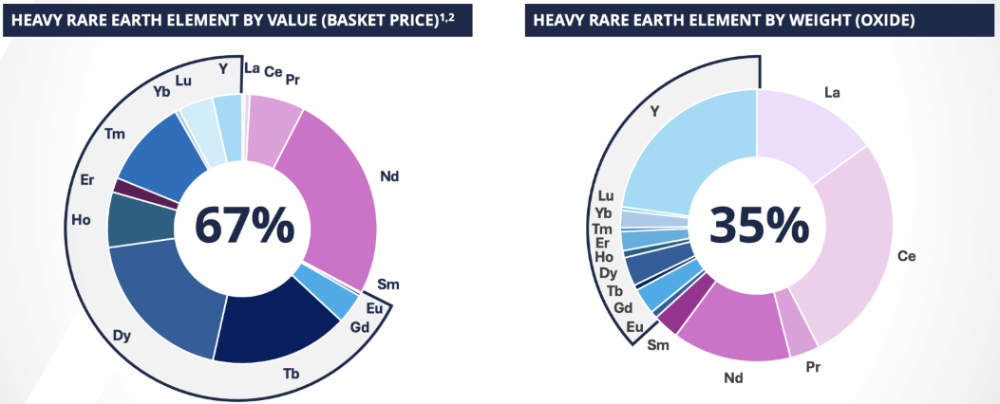Experts say VTM’s North Stanmore is a world-class discovery, here’s why

VTM's on top of the world with North Stanmore and its high heavy rare earths dominant resource. PIc: Getty Images
- North Stanmore acknowledged as a world-class ionic clay-hosted heavy rare earths and scandium discovery by Geological Society of WA
- Project has Australia’s largest indicated heavy rare earths dominant resource at 149Mt
- Metallurgical test work has returned strong 93% recoveries of valuable magnet REEs
Rare earth projects are increasingly in the eye of the investing public and for a project to be recognised as being world-class by a leading geological agency is a huge tick in its favour.
That’s exactly where Victory Metals’ (ASX:VTM) North Stanmore project near Cue, Western Australia, stands with the Geological Survey of Western Australia acknowledging that it is a world-class ionic clay-hosted heavy rare earths and scandium discovery.
The agency, which maps the geology of the state that can be fed into regional exploration models – providing explorers with valuable insights, noted that ionic clay deposits are increasingly being recognised globally and there is high potential for these types of deposits in WA.
It added that understanding new discoveries such as North Stanmore helps ensure that GSWA mapping and pre-competitive geoscience data acquisition can support future discoveries of this kind.
Understanding the endowment of recent discoveries also helps with GSWA’s role in promoting WA as an exploration investment destination of choice.
Heavy REEs are valued for their role in the clean energy transition with dysprosium and terbium being standouts for their use in permanent rare earths magnets that are used in electric vehicle motors and wind turbines.
Scandium is also prized for its use in aluminium alloys.
More generally, ionic adsorption clay projects are valued for their high percentages of magnet rare earths and near-surface nature, which makes them easier to mine, and ease of processing compared to their hard rock counterparts.
A large, high-confidence resource
So just what makes North Stanmore standout as a “world-class” discovery?
We can start with the project hosting a resource of 235Mt, about 149Mt or 63% of which sits in the higher confidence indicated category that provides enough certainty for mine planning, contained within regolith clay-hosted mineralisation overlying an alkaline intrusion.
It is also incidentally the largest indicated heavy rare earths dominant deposit in Australia.
Other reasons why North Stanmore earns its title include heavy REEs making up 35% of the total rare earth oxide mix and a near surface higher grade domain of 45.9Mt at 1050ppm TREO that rather neatly supports a development strategy designed to rapidly deliver new heavy REE supply to address global demand.
For context, the heavy REE content makes up 67% of the value of the TREO basket.
More recently, hafnium – a high value product and critical metal with key applications in defence functions and the aerospace industry – has also been confirmed to be present at the project.

Proven REE recoveries
However, a large resource isn’t enough to be deemed worthy of being world-class on its own. It also needs to demonstrate amenability to processing.
This is again an area when North Stanmore passes with flying colours.
Leach testing on beneficiated samples – produced using a simple physical screen that resulted in a more than 60% increase in grades – successfully returned recoveries of 93% for critical MREOs such as Dy, Tb, praseodymium and neodymium.
Notably for VTM, these high recoveries were achieved with low temperature, short leach time, low acid consumption, low-cost acids, low radioactivity and low impurities.
Scandium recoveries of up to 50% were also achieved.
Prime position
North Stanmore is also well situated on the Great Northern Highway – one of Australia’s major arterial road networks.
It sits just 7km from the town of Cue and is 420km by sealed, well-maintained roads from Geraldton Port.
Cue itself hosts a regional airport with reliable services to all major Australian cities.
Not sitting still
VTM is currently progressing a scoping study for North Stanmore.
It is also conducting further metallurgical test work to recover by-products such as copper and cobalt.
Adding interest, North Stanmore remains largely underexplored, with 92% of the tenement area still untouched while the deposit itself is open in all directions.
At Stockhead, we tell it like it is. While Victory Metals is a Stockhead advertiser, it did not sponsor this article.
Related Topics

UNLOCK INSIGHTS
Discover the untold stories of emerging ASX stocks.
Daily news and expert analysis, it's free to subscribe.
By proceeding, you confirm you understand that we handle personal information in accordance with our Privacy Policy.








